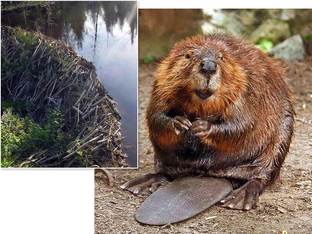 When it comes to transforming their environment, beavers have a lot in common with humans. They clear-cut trees and build dams to block streams, in the process radically altering the world around them. Now, it appears that beavers play a complex role in climate change, too. A new study suggests that beaver dams and the sediments corralled behind them sequester carbon, temporarily keeping greenhouse gases containing the element out of the atmosphere. But when the animals abandon these sites, the carbon leaks back out, contributing to global warming. Because the water table is elevated behind an intact beaver dam, oxygen can't get to much of the wood and other organic matter buried in sediments there, so it decomposes more slowly. In fact, Wohl says, wood buried in soggy beaver meadows can last about 600 years—longer than a typical log that falls in the forest. But when the water table drops and the soils dry out, decomposition begins to release carbon dioxide to the atmosphere. In work published last year, Wohl and her colleagues found that sediment upstream of active beaver dams in the park contained about 12% carbon by weight, most of it locked in wood. But in research to be published in a forthcoming issue of Geophysical Research Letters, Wohl reports that, on average, only 3.3% of the sediments in abandoned beaver meadows is carbon. Source: Sciencema
0 Comments
Leave a Reply. |
Blog Archive
|
 RSS Feed
RSS Feed
